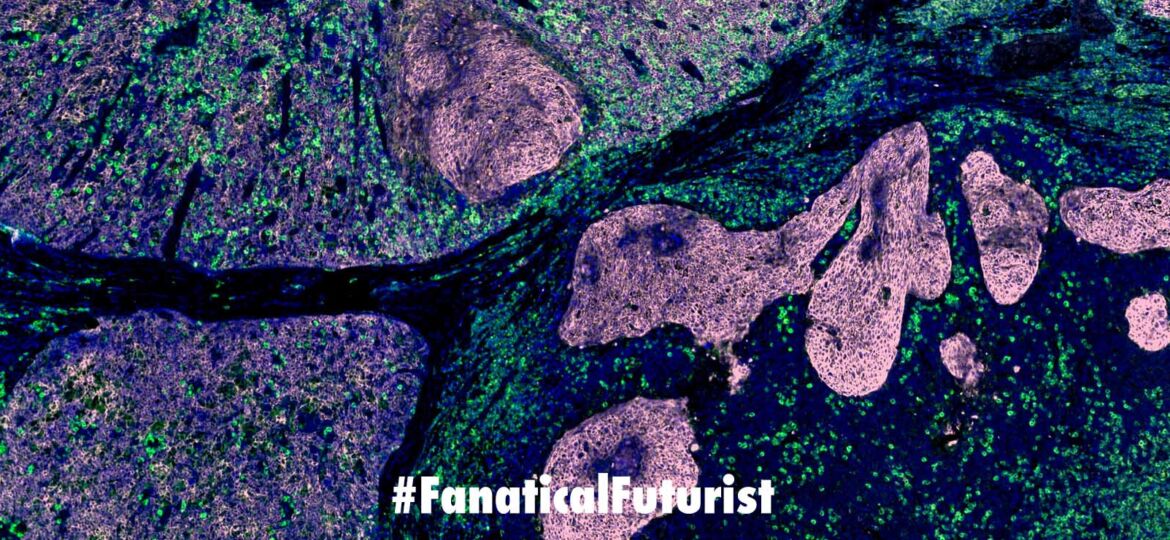
WHY THIS MATTERS IN BRIEF
Researchers have found a “switch” that stops cancer in its tracks and stops it spreading, and they also know how to turn it off.
 Love the Exponential Future? Join our XPotential Community, future proof yourself with courses from XPotential University, read about exponential tech and trends, connect, watch a keynote, or browse my blog.
Love the Exponential Future? Join our XPotential Community, future proof yourself with courses from XPotential University, read about exponential tech and trends, connect, watch a keynote, or browse my blog.
Despite many medical advances to eliminate the scourge of cancer that include everything from new cancer vaccines and drugs, as well as using Virtual Reality (VR) during cancer operations to improve patient outcomes, cancer is still a blight on our society.
Now though, as the war to beat cancer rages on, researchers have identified a single molecule that could be used as a drug to prevent metastasis, the process by which cancer can spread and cause death, and stop cancer in its tracks.
The molecule, identified by Professor Yibin Kang’s research group at Princeton University, New Jersey, inhibits the product of a key metastasis-promoting gene called MTDH and could be used as a drug. In laboratory tests on mice with breast cancer and on human tumour grafts, the compound inhibited tumour growth and prevented metastasis in mice.
“You can’t find a drug target better than this: MTDH is important for most major human cancers, not important for normal cells, and it can be eliminated with no obvious side effects,” said Professor Kang.
After cancerous cells have spread throughout the body by metastasis, treatments such as chemotherapy are much less effective, and the likelihood of patient survival is much lower. This means that stopping metastasis could significantly increase the odds of patients surviving.
Professor Kang and his team discovered the MTDH gene was critical for cancer to proliferate and metastasise back in 2014. As MTDH cannot be removed from the genome of cancer patients, the goal became to inhibit it from working.
The crystal structure of the MTDH protein shows it has two finger-like protrusions which fit into two holes on the surface of another protein called SND1. MTDH depends on this interaction to function. In research outlined in one paper published in Nature Cancer, Professor Kang’s research team screened a library of 50,000 different molecules to find the one which best plugs the holes in SND1 and prevents the proteins from interlocking.
In cancerous cells, MTDH assists survival by preventing recognition and attack from the immune system, as well as helping tumours endure the stress of chemotherapy. By blocking the MTDH-SND1 interaction this drug reactivates the immune response and allows malignant cells to be properly targeted and removed.
‘We knew from the crystal structure what the shape of the keyhole was, so we kept looking until we found the key,’ said Professor Kang. In a further paper published in Nature Cancer the team demonstrated that two candidate drugs were effective at suppressing tumour growth and metastasis and enhanced chemotherapy sensitivity in mice.
Professor Kang admits he is just scratching the surface of what the candidate drugs could do. His team are now working to optimise their interaction with SND1 and lowering the effective dose, and he’s hopeful his team will be ready to begin clinical trials in human patients in two to three years.
















